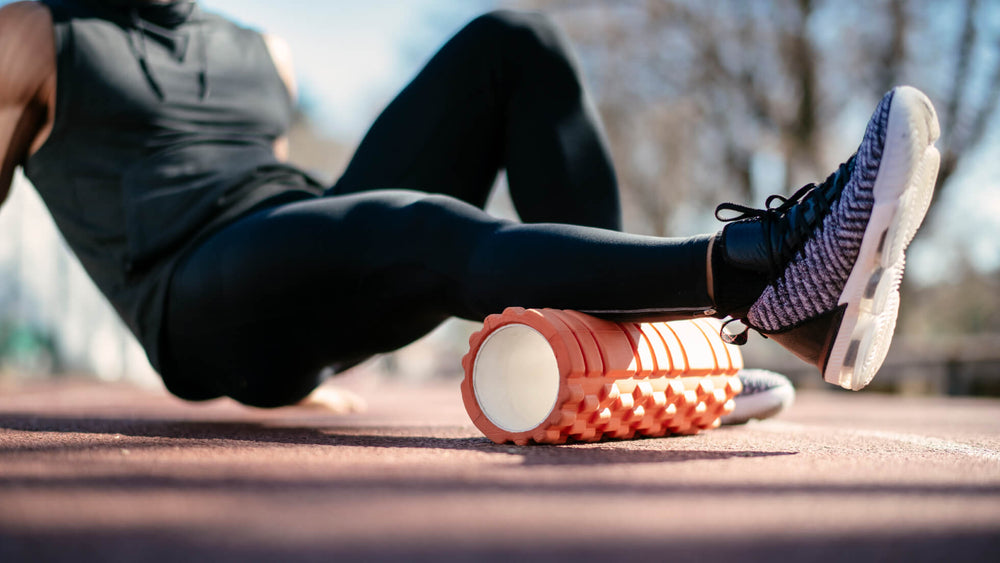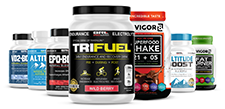How I Used Altitude RX to Go from 800 Feet to 8,000
This summer, I had the opportunity to leave my town of Minneapolis, MN (830 feet elevation) and travel to Allenspark, CO (8,491 feet elevation) for an entire month of trail running, mountain biking, gravel riding, and hiking up stunning mountain peaks and across alpine streams.
Amidst all of the excitement of making packing lists, sorting out my work schedule, and emptying the fridge, I had one nagging concern — how the altitude would affect me. I’ve vacationed in high-altitude places like Colorado and New Mexico before, but historically I’ve gone into those trips less-than-prepared and paid the price. Namely, having a headache for a couple days, feeling generally fatigued, not having much of an appetite, and not sleeping well. As someone who likes to stay physically active while on vacation, this was always a frustrating, restless situation. It usually took me a good week, sometimes more, to start feeling like myself again, and even then, my workouts were significantly scaled back.
That’s because my body is used to a high level of oxygen that allows me to properly fuel my muscles and vascular systems without much additional effort. When that oxygen is suddenly reduced, bodies can sometimes freak out leading to minor symptoms like the ones I described to more severe symptoms like vomiting and Acute Mountain Sickness (which I have fortunately never experienced).
This time, however, I had a secret weapon: Altitude RX. I started taking it as recommended, and the difference was night and day. On my first full day in Allenspark, I did experience a minor headache, which is pretty standard for me at altitude. But here's the kicker: it was minor, and it went away within 24 hours. Usually, that headache is a pounding, all-encompassing beast that demands my attention for days. It feels like I can feel my heartbeat in my forehead. This time, it was more of a gentle reminder that my body was adjusting, and it faded practically overnight.
My training acclimation strategy also played a key role. I didn't just jump into intense workouts. My first day in Colorado involved an easy hike with my dog, allowing my body to simply exist at the new elevation. After that, I gradually increased the intensity. For trail runs, I started by hiking uphill and on flats, and running only on downhills. As I felt stronger, I progressed to running on flats and downhills, eventually even incorporating some uphill running. To give my body a chance to recover while still getting an aerobic workout, I also mixed in some bike rides, which are excellent for low-impact training.
Thanks to Altitude RX, I was able to push myself harder each day, much sooner than I ever have before at altitude. I was pleasantly surprised at how quickly I was able to recover from hard workouts at altitude and felt ready to tackle more challenging trails including hiking Mount Audubon, which tops out at 13,229 feet. The typical lingering headaches, fatigue, and restless nights that usually plague me at altitude were, for the most part, essentially avoided. It felt like my body was able to adapt and utilize the available oxygen much more efficiently.
Living in Allenspark for a month was an incredible experience, and a huge part of being able to fully enjoy it, both on and off the trails, was feeling good. Altitude RX helped me acclimate faster and significantly reduced the usual side effects of living at altitude. If you're an athlete, or simply someone who loves to explore high-altitude destinations, and you've struggled with altitude sickness in the past, I highly recommend giving it a try!
Take the next step in your training regimen: Try any BRL Sports supplement risk-free! If our natural nutritional products aren’t the best you’ve ever used, simply return your purchase for a 100% refund — no questions asked!
Also in Inspiration & Perspiration

High Altitude Supplements: Complete Guide to Training & Prevention (Altitude Sickness Solutions)
Support endurance and reduce altitude stress with supplements that improve oxygen efficiency, stamina, and recovery in high-altitude conditions.

Best Supplements For Runners: Complete Guide By Training Phase (Base, Peak, Taper & Race Day)
Discover the best supplements for runners by training phase—base, peak, taper, and race day—to boost endurance, recovery, and performance.

Creatine for Endurance vs. Sprint Efforts
Creatine isn’t just for power—learn how it boosts sprint speed, recovery, and endurance performance.


